Chinese cuisine gets a novel rethink at ASU
Ace Tan finds the sweet spot between innovation and accessibility at his new Labrador Park restaurant
NEW RESTAURANT
ASU 30 Labrador Villa Road Singapore 119189 Tel: 8084 0660 Open for dinner only, Wed to Sun: 6 pm to 11 pm
IN CHOOSING restaurant names, Ace Tan was never one to use a dictionary. He created his own vocabulary with concepts such as Ards and Aisa, and even had a stint at 1-V:U – a restaurant with a severe allergy to consonants. And now he has ASU – pronounced vaguely like if we had a lisp and needed to sneeze politely.
But while his previous outfits were inspired by lofty objectives, ASU is derived from his own name – as mispronounced by his Korean colleagues during his time in Seoul. Whether he meant it to be or not, this is his most personal restaurant yet, and, after years of drifting in the food and beverage ecosphere, Tan has finally hit home.
Tan has, unfairly, existed on the periphery of success for a long time – one of the rare Singaporean chefs with a vision who never quite had the right timing or platform to truly execute it. Technically, he was always up there, but somehow lacked that final flourish to tie his grab bag of ideas into a neat knot.
When ASU opened in October last year with a menu titled Origins that waxed lyrical about progressive Asian cuisine, we were afraid. A rabbit hole lined with homemade koji and dissertations on the manifestations of Chinese food and its relationship to the rest of East Asia was not one we wanted to step into.
Then he put orh luak into a shiny little ball and we were sold.
ASU is that happy place where both chef and diners get what they want. Tan knocks himself out with all the intellectualising and theorising he wants. We just eat. The food is Chinese yet deeply original, with Korean, Thai and Japanese influences so naturally woven in that you barely notice. Tan’s entire career and life experiences are filtered through a fine mesh, focusing on flavour, not ego, and the result is novel yet accessible, nuanced and complex, all at the same time. And delicious.
He couldn’t have hoped for a better space. This is destination dining, and ASU sits in a languid bungalow in Labrador Park, festooned with greenery and an out-of-town vibe. The decor is discreetly Oriental, with original art on the walls depicting winters in China to match the current seasonal menu. A traditional Chinese medicine cabinet is the backdrop for the open kitchen. You sit at a winding counter, entertained by intricately painted picture cards depicting the ingredients that go into each dish.
The dinner menu starts at S$188, but factor in an extra S$100 for four supplements for the full experience.
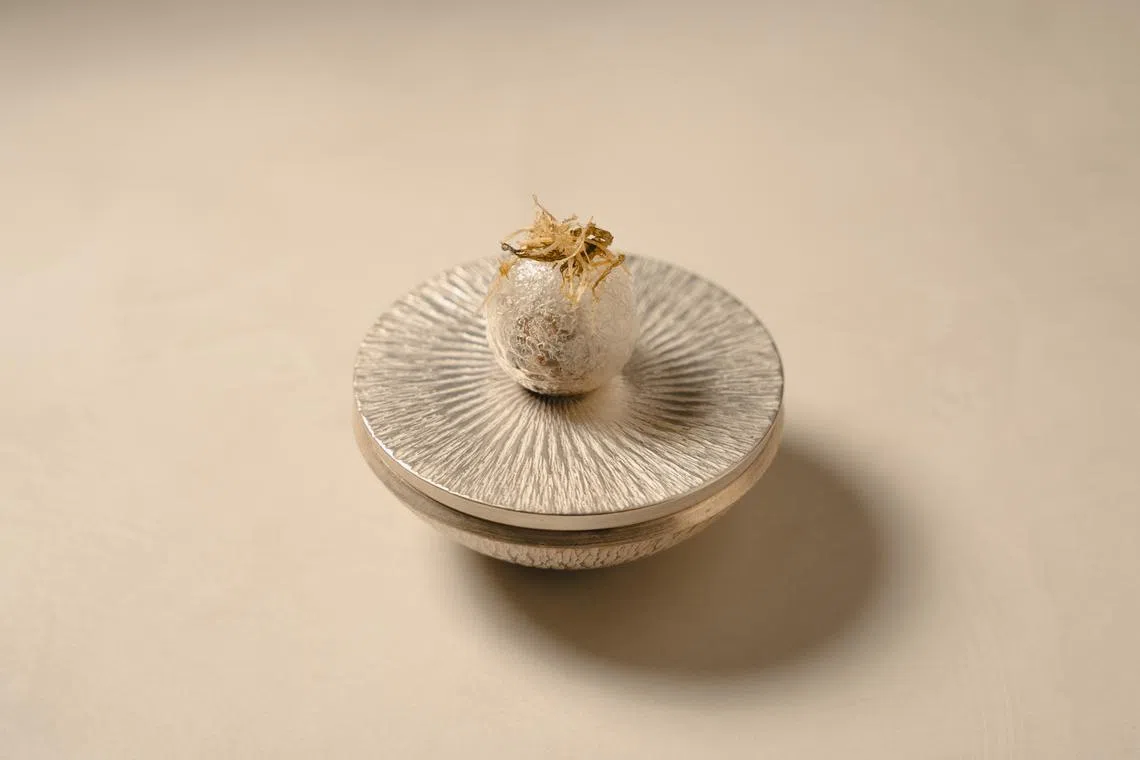
The opening bite is the aforementioned orh luak after a consultation with its fairy godmother. Transformed into a crystal ball, the kuzu starch dumpling skin is filled with oysters marinated in sheng yan sauce, with the chilli-vinegar kick of an oyster omelette without the egg.
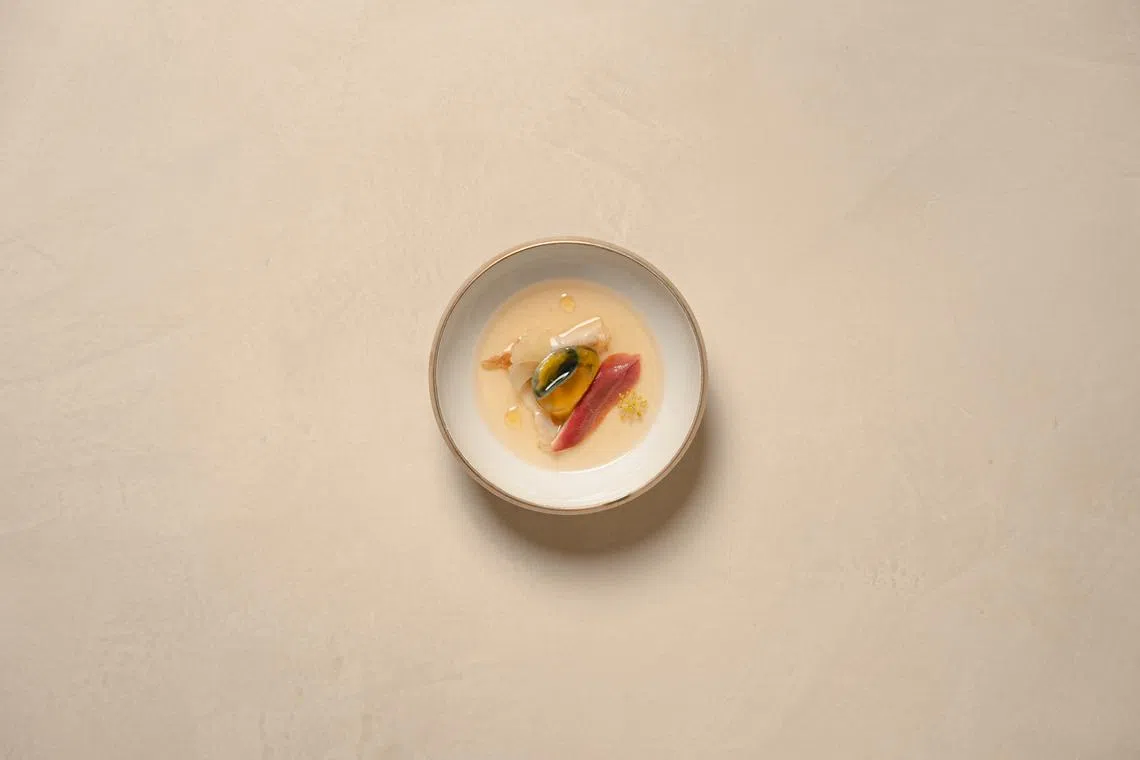
Pidan tofu is beautifully reinvented as smooth tofu custard topped with a crunchy clam and home-preserved century quail egg, perked up with pickled ginger. A touch of chilli oil sneaks up on you before you get too complacent.
Meanwhile, Tan’s VIP version of Chinese New Year prawn rolls covers crunchy spring roll skin in crushed sakura ebi and fills it with a minced drunken prawn mixture. This is one snack you would deprive your relatives of as you ply them with the supermarket version instead.
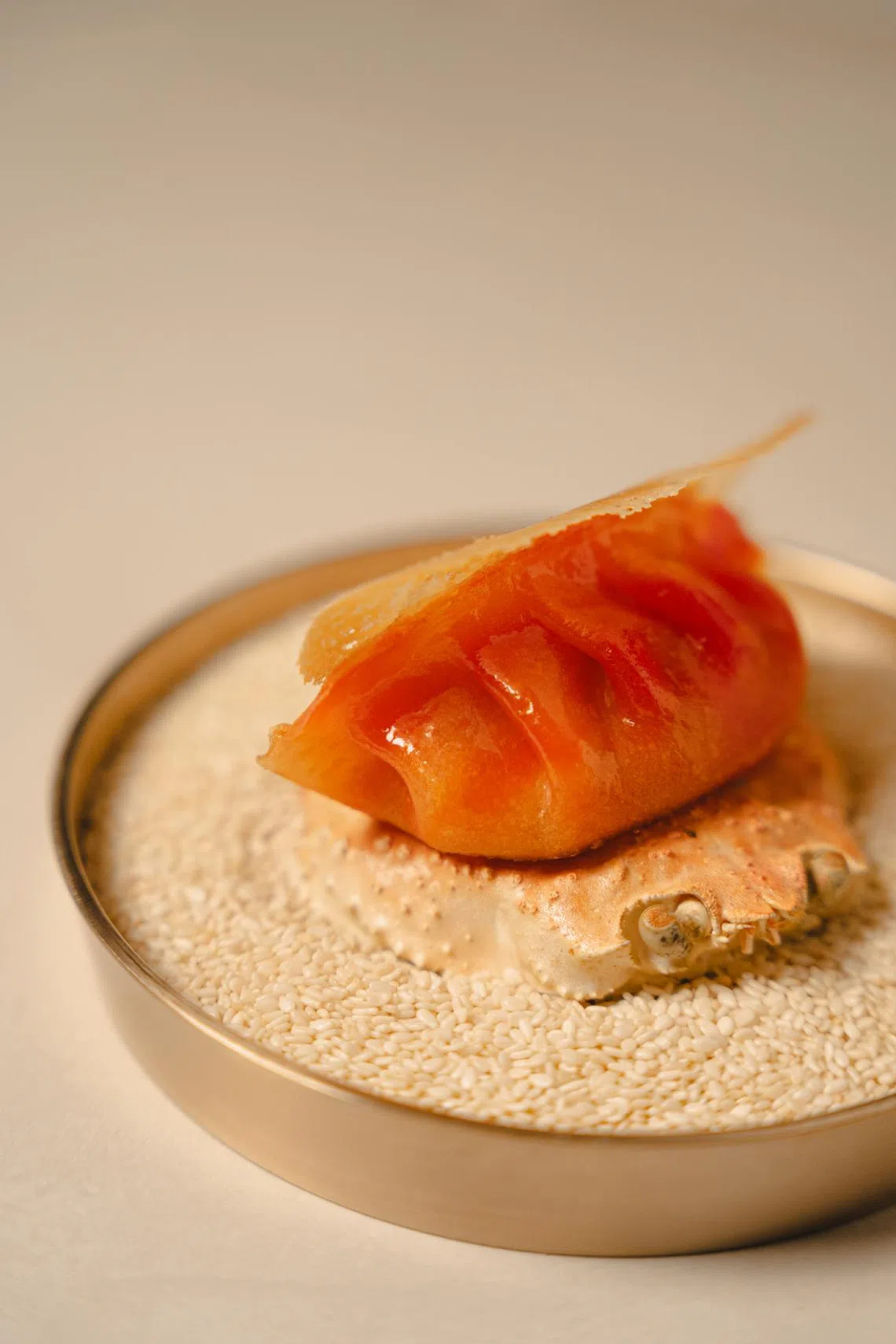
A crab gyoza is pricey for the extra S$20 but the handmade skin (could be chewier) is packed with a fair bit of winter snow crab meat and roe. A pan-seared bottom and crispy filigree tuile, and juices that dribble at first bite seal the deal.
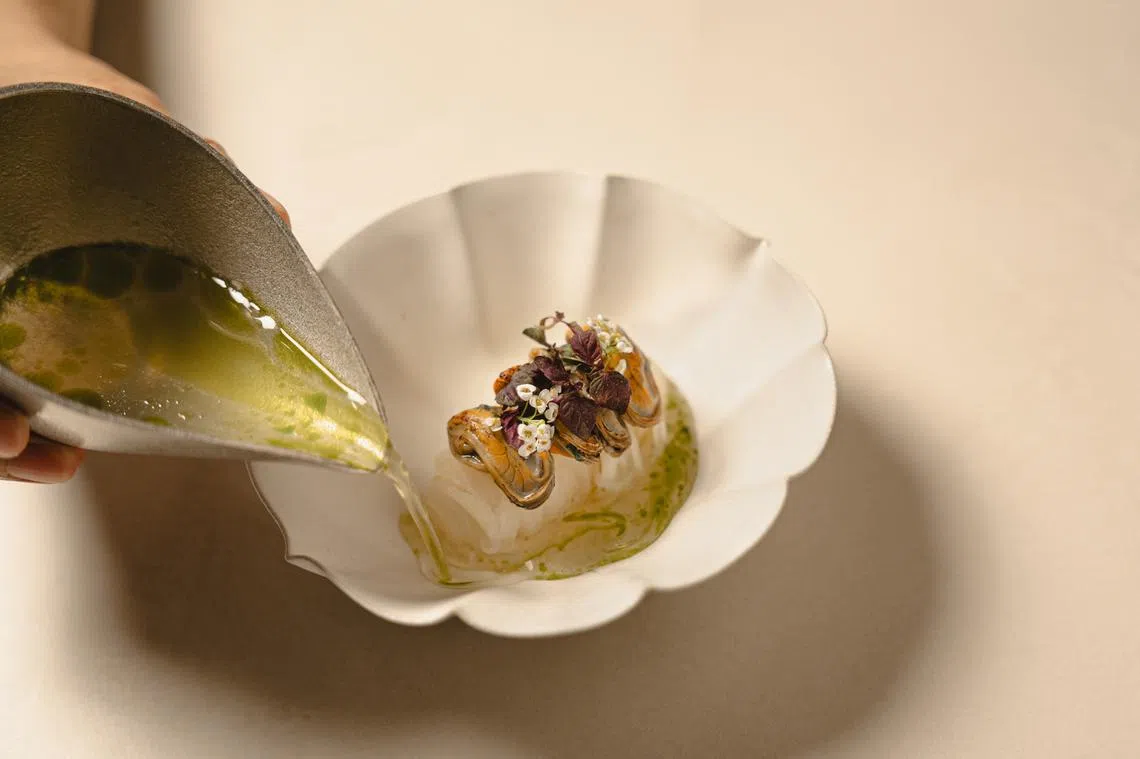
In tribute to Teochew immigrants who returned home from Thailand with holy basil in their luggage, Tan presents chewy somen in a cold broth left from sauteing fresh mussels in chilli, herbs and Chinese wine. The balance of acidity and savouriness is pitch perfect with a hint of basil – restrained yet complex.
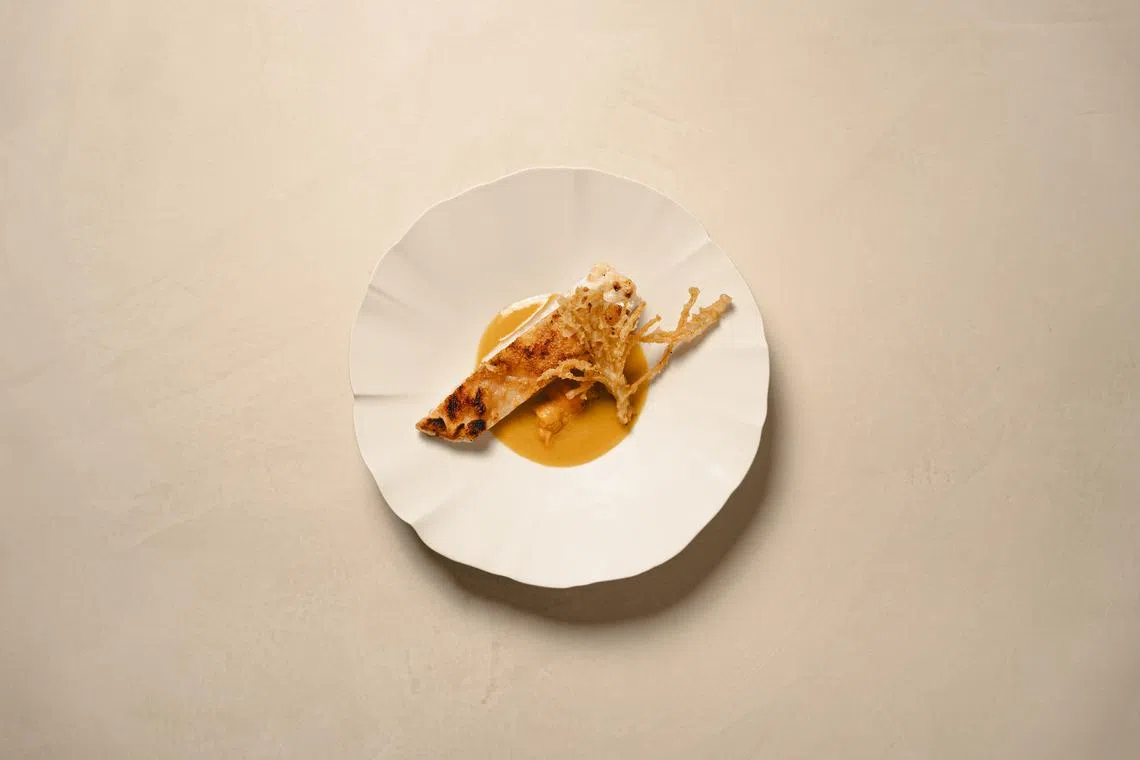
You can skip the supplementary fish larb if you must, as the crispy-skinned grouper fillet in creamy pumpkin sauce garnished with uni and deep-fried enoki mushroom is good enough. But don’t miss the quail (S$40) – braised in a four-month-old sauce and then roasted to a lacquered golden finish. It’s both tender and crisp, freshened with bites of pickled guava.
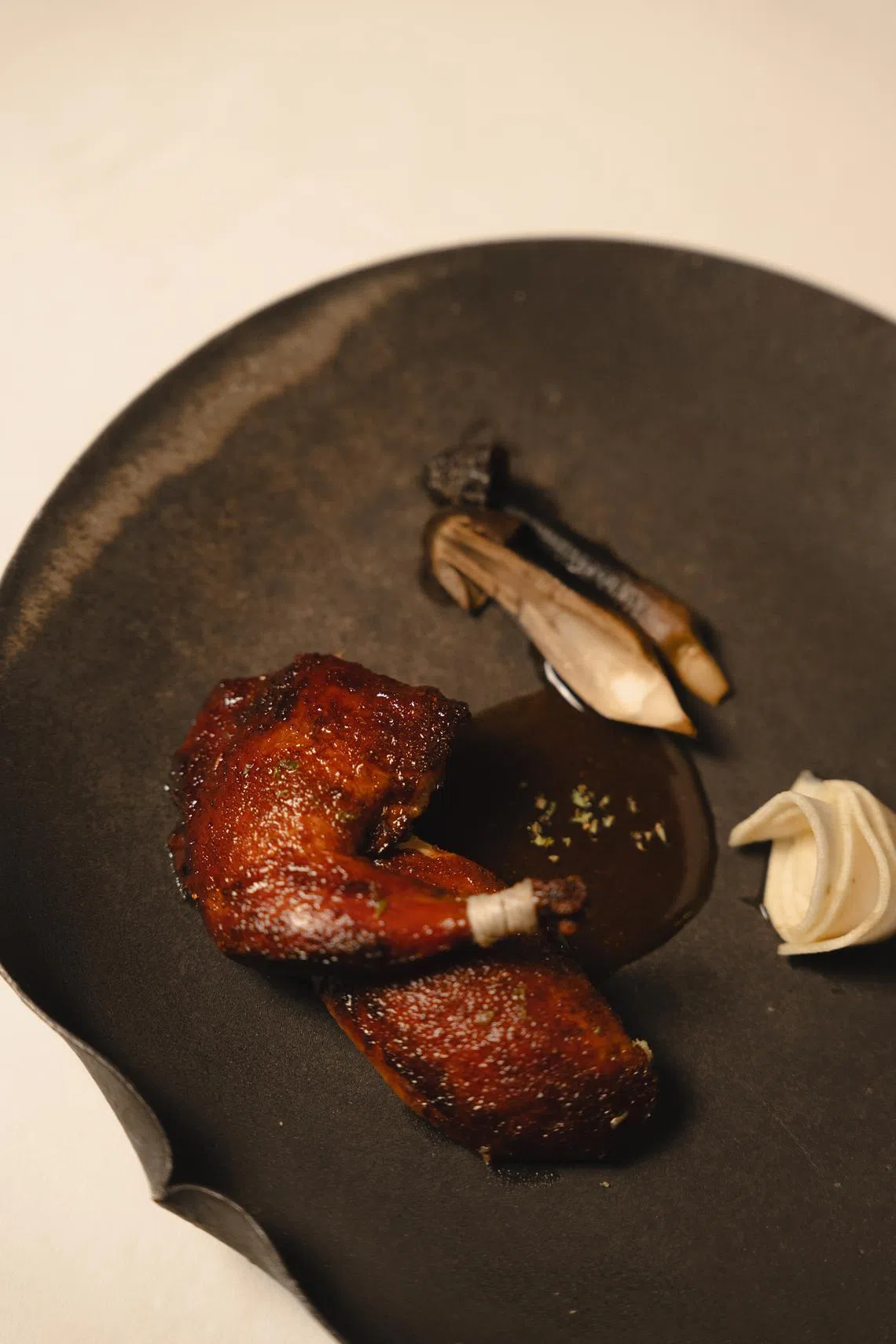
The Fuzhou-inspired lamb chop marinated in koji and fermented beancurd has a rich, earthy juiciness enhanced with a red koji rice wine sauce. Addictive egg yolk-fried Japanese rice comes with it, and pickled black fungus.
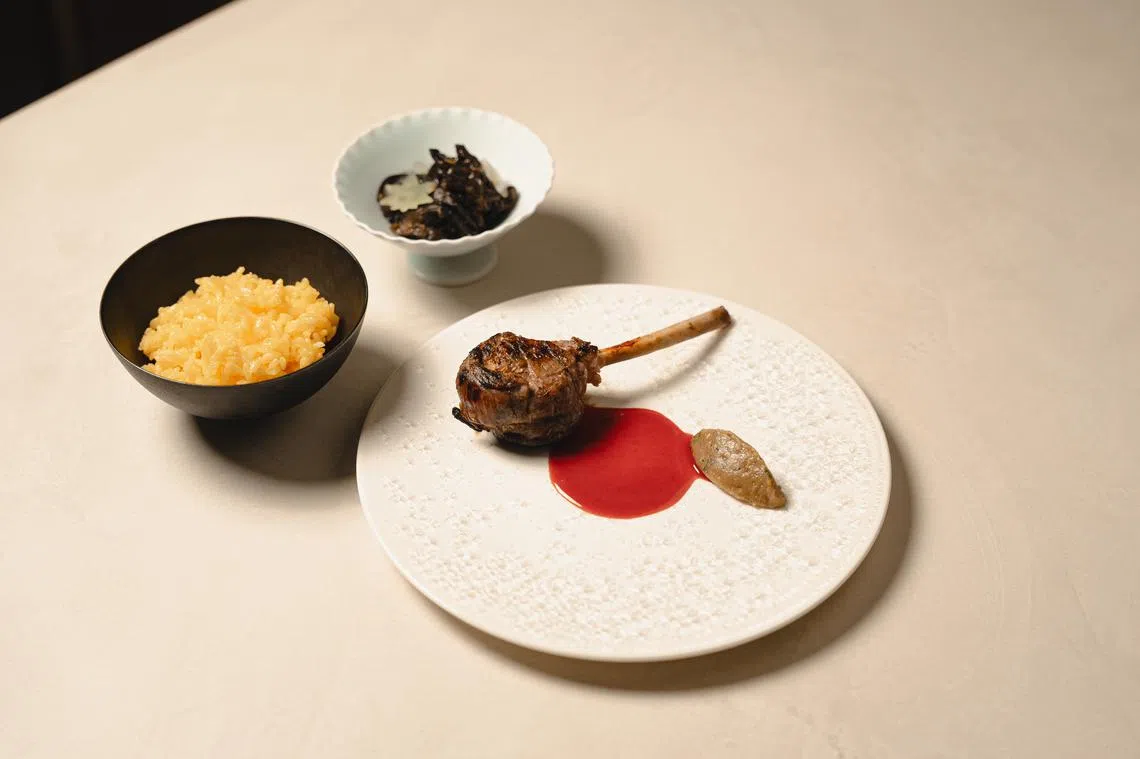
Dessert is an intensely chocolatey buah keluak ice cream with burdock chips – simple but deeply satisfying. Cracking the citrus snowball (S$15) is a feat, but, once past the hard white-chocolate shell, there are fun cubes of kueh ambon, candied orange and osmanthus tea sorbet.
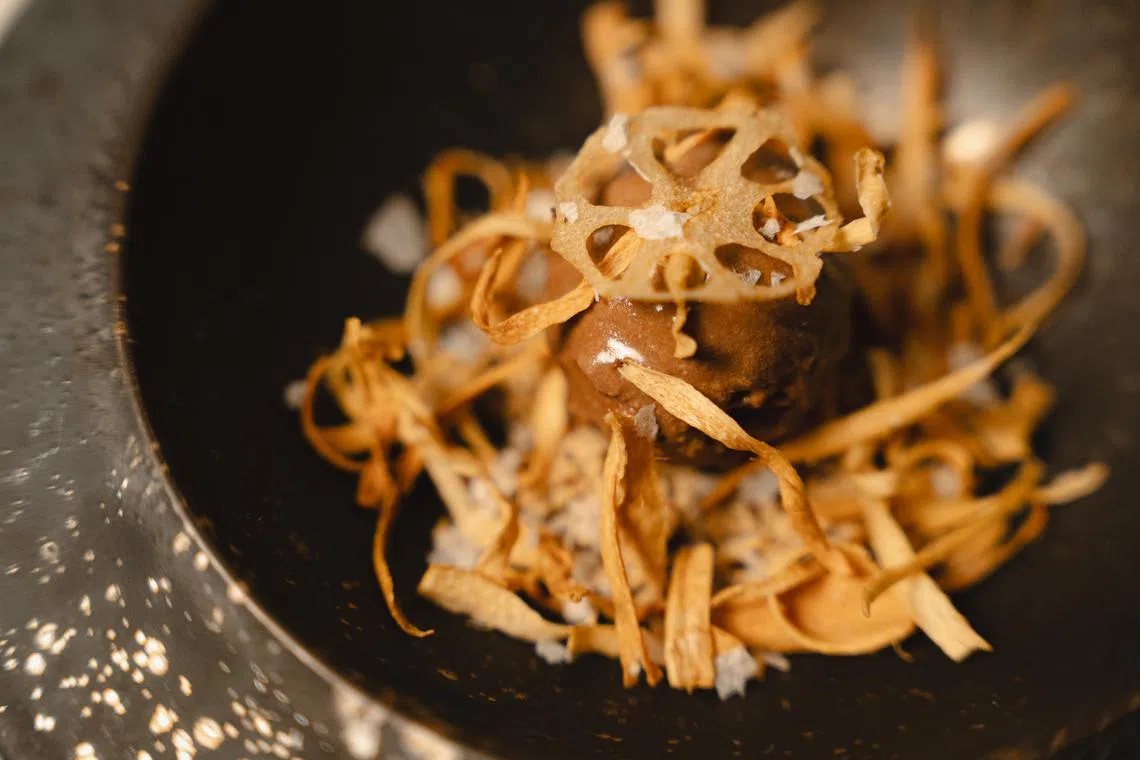
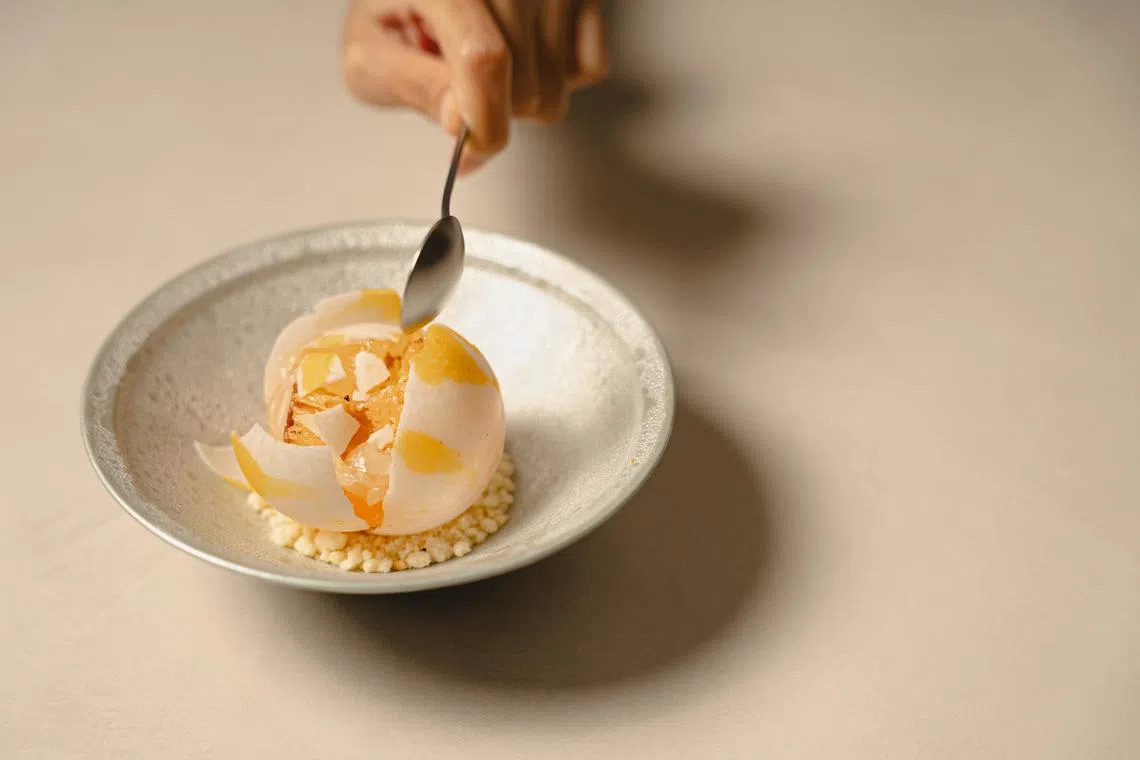
ASU scores on several fronts: there’s an originality we haven’t seen among Singaporean chefs working with Chinese food. There are no gimmicks – the food is grounded, refined and even understated at times. In a time of in-your-face marketing, Tan and his mild persona may lose out. We hope not, because his skills and story have evolved over the years – he has decluttered and stands on surer ground. There are finer details and sharper execution to be mindful of for sure, and there may be more robust palates out there to convince.
But in our view, Tan has been in the wings for too long. It’s time for this Ace to go places.
Rating: 8
Decoding Asia newsletter: your guide to navigating Asia in a new global order. Sign up here to get Decoding Asia newsletter. Delivered to your inbox. Free.
Copyright SPH Media. All rights reserved.










